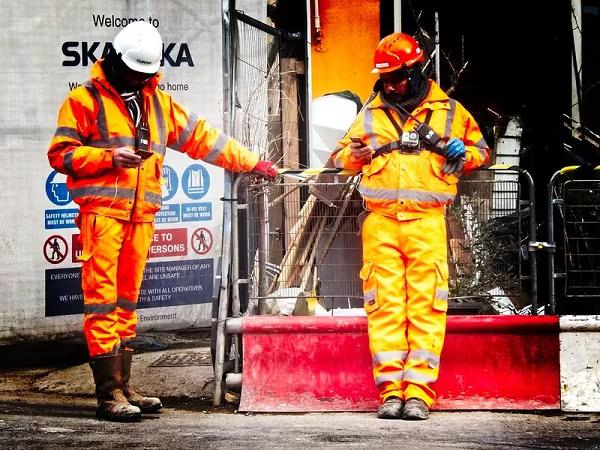Benefit numbers have been in the spotlight again in recent times. Despite many assertions, the Jobseeker Support benefit isn’t just a straightforward “unemployment” benefit. Nevertheless, the change in Jobseeker Support recipients over time is an important figure for decision makers to track. Recipient numbers remain above pre-pandemic levels, particularly for Work Ready recipients, despite a record low unemployment rate and intense pressure in the labour market.
In this article, we outline current trends in Jobseeker Support recipient numbers to inform public discussion.
Jobseeker Support recipients have fallen, but not to pre-pandemic levels
Jobseeker Support figures are now reported weekly by the Ministry of Social Development, and we’ve used these figures to assess the trend in Jobseekers over time. Benefit numbers are seasonal, usually increasing from around mid-year and then falling over the first half of the next year (see the 2019 line in Chart 1 below). For that reason, we focus mostly on comparing figures at a point in the year to a similar point in a preceding year.
Jobseeker Support recipients had been trending up from 2019 into 2020, and at the start of March 2020 (before New Zealand’s Level 4 Lockdown) there were around 145,000 Jobseeker Support recipients across New Zealand. That figure compared to around 132,000 in March 2019. By March 2021, that figure had risen to over 206,000 recipients, over 61,000 more than before Lockdown, and nearly 75,000 above 2019 levels.
Since then, Jobseeker Support recipients have trended down, falling to under 181,000 at the start of March 2022 – still over 35,000 higher than March 2020 levels (see Chart 1).
By mid-August 2022 (the latest data available), there were just under 171,000 Jobseeker Support recipients, around 31,000 more than in August 2019, and around 17,000 higher than where Jobseeker Support figures might have been in 2020 if the pandemic had not occurred (based on growth in the working age population).
Part of the rise in Jobseeker Support figures is due to the population expanding (although the working age population is actually contracting at present due to the migration outflow). Despite this trend, Jobseeker Support recipients are currently sitting at 5.4% of the working age population, compared to 4.6% in 2019 and 4.7% in 2020 before COVID-19 hit. As a proportion of the working age population, Jobseeker Support recipients peaked at 6.8% at the start of 2021.
Jobseeker Support recipients remain unequivocally above pre-pandemic levels.
Health Condition and Disability recipients up, but Work Ready Jobseekers up more
The Jobseeker Support benefit isn’t a benefit for anyone without a job. Instead, it combines elements of the old (pre-2013 benefit reforms) Unemployment Benefit (including Hardship and Training groups) and the Sickness Benefit. Officially, the Jobseeker Support benefit “is a weekly payment that helps people while they are looking for work or can't work right now”.
These definitions are important, as Jobseeker Support includes a “Work Ready” sub-type and a “Health Conditions and Disability” sub-type. Both sub-types are responsive to economic conditions, although to varying degrees.
Chart 2 outlines the trends in both Work Ready and Health Conditions and Disability Jobseeker Support recipients. Work Ready recipients rose considerably at the start of the Level 4 Lockdown, from around 82,000 at the start of March 2020 to over 128,000 by the same time in 2021. Health Conditions and Disability recipients rose from around 63,000 to just over 78,000 over the same period.
Since then, Work Ready numbers have fallen, while Health Conditions and Disability numbers have continued to rise, before more recently falling during 2022.
Interestingly, Work Ready numbers are now below where they might have been expected to be if the pandemic had not occurred in 2020 – around 15,000 below. Health Conditions and Disability numbers are around 5,000 higher than might have been expected in 2020.
By mid-August 2022, Work Ready numbers were around 22,000 higher than at the same point in 2019. At the same time, Health Conditions and Disability numbers were around 8,000 higher.
How long do different groups spend on Jobseeker?
Questions have also been asked about the duration of time on Jobseeker Support. A useful Official Information Act request, published in April 2022 with February 2022 data, shines some light on the time spent on Jobseeker Support.
As Table 1 shows, it is impossible for young people to have spent long periods of time continuously on the Jobseeker Support benefit as they only become eligible at 18 years of age. We present the full dataset below for completeness.
Understandably, there are more Health Conditions and Disability Jobseeker recipients who remain on Jobseeker for longer than a year – around 60,000 of the current recipients in February 2022. Just over 53,000 Work Ready recipients were on for longer than a year. Notably, 29% of the Work Ready recipients on Jobseeker for longer than a year are aged under 30, compared to 19% of Health Conditions and Disability.
Important to help those who can into work
Regardless of the tightness of the labour market, it’s important to provide a pathway into work for those that can work. Often this quest will require additional support to ensure that those moving into work have the right skills for the workplace.
Not everyone can move into work off the Jobseeker Support benefit – certainly not immediately. But as the figures above show, there are still many Work Ready recipients who should be able to be supported into work in a shorter period of time than other recipients. Declines over the last year or so in Jobseeker Support recipients have been encouraging, but the recent plateauing of Jobseeker Support numbers, particularly Work Ready recipients, suggests there’s still more to do.




















